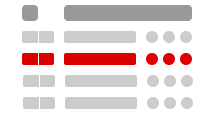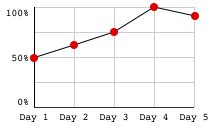1. isolate X's on one side of the equation
2. factor out the leading coefficient of
3. "completing the square"
• X-side: inside the bracket, add (half of the coefficient of
• Y-side: add [ leading coefficient (half of the coefficient of ]
4. clean up
• X-side: convert to perfect-square form
• Y-side: clean up the algebra
5. (optional)
If necessary, determine the vertex now by setting both sides of the equation equal to ZERO.
6. move the constant term from the Y-side to the X-side, and we have a quadratic function in vertex form!






